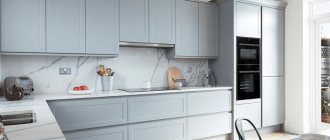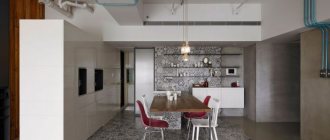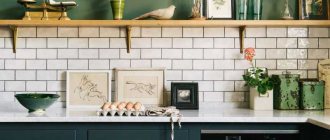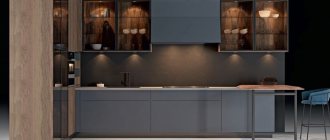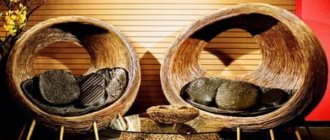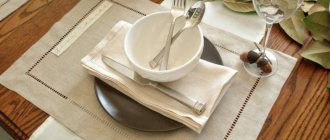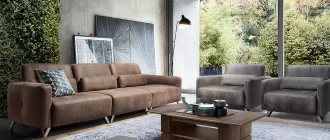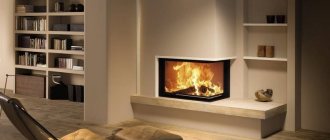L-shaped layouts can be found in many modern kitchens. Not least because of its practicality, because it provides for the corner placement of the sink and allows you to intelligently use every centimeter of free space. If you like just this option, then take note: corner kitchens with a sink in the corner come in a variety of varieties, and in order to understand the topic and really make the right choice, you need to delve into numerous nuances. We talk about them, and also show photos of the most interesting ideas.
Which sink is better to choose?
To make the corner sink in the kitchen look harmonious in the interior, before purchasing, evaluate it according to 4 characteristics:
- Size.
- Form.
- Number of bowls.
- Material of manufacture.
Size
The dimensions of a corner sink primarily depend on the number of dishes that are supposed to be washed in it. For a large family, you need a bowl that is large in depth and width. For 1-2 people or if you have a dishwasher, you can get by with compact models.
Another factor is the size of the kitchen itself and furniture. Maintain proportions: the smaller the cabinet, the smaller the sink.
Form
Standard products are round, square, rectangular. They do not take up much space and can be installed in a corner or on a straight section. Suitable for small kitchens.
There are also corner kitchen sinks with a so-called “wing” - a platform designed for drying dishes or food. Any bowl can be equipped with a wing.
A separate type is special corner sinks. Typically shaped like a trapezoid or pentagon, they fit perfectly into trapezoidal cabinets. Installation can be done close to the edge, eliminating the need to reach for the faucet in the future. For cabinets under 90C, there are special L-shaped models - on one side they have a sink, on the other there is a wing or a second section.
Number of bowls
Perhaps, corner installation is one of the few options when having two bowls can really be useful. A second bowl is necessary when you need somewhere to put dirty dishes while someone is busy washing in the main compartment.
Material
Corner sinks, like any other, are made from various materials:
- Stainless steel. The cheapest option, it looks appropriate in almost any kitchen interior, and is easy to maintain. The downside is the loud noise from running water, which can be solved with sound insulation.
- Composite Sinks made of quartz or granite chips look noble, but are difficult to maintain. They cannot be washed using any means, but the surface may be stained by tea, coffee, carrots, beets, etc.
- Ceramics. Corner sinks are not made from it, but you can put an overhead rectangular model on a trapezoid cabinet. Looks neutral and easy to care for.
The photo shows a bright sink with a wing and a second bowl
Shapes of corner sinks
Today, thanks to new technologies, the choice of different forms of plumbing products is very diverse. They are:
- Rectangular;
- Square;
- Round;
- Oval;
- Trapezoidal;
- Non-standard forms.
Some manufacturers offer the production of this type of plumbing fixtures for individual orders, which is a necessity when using expensive design projects. When choosing any bowl shape, it will be very convenient to have wings on the sink. When space in the work area allows, it is better to buy products with additional work area to increase the practicality of its use.
Which installation method should I use?
In terms of installation methods, corner sinks do not differ from straight sinks. They are:
- Mortise. “Lie” on the surface. Moisture getting under the sides is almost inevitable.
- Flat. The upper border is flush with the tabletop. Hygienic, convenient option.
- Invoices. The edge is a few cm higher than the tabletop. Needs adjustment in height - the top edge is a maximum of 85-90 cm from the floor.
- Under-table. The sink is recessed under the countertop. Suitable for stone panels only.
The “flat edge” installation method is considered optimal for the kitchen - it looks neat and is 100% tight.
Manufacturing materials
This is the most important criterion when choosing. The service life of the sink depends on the type of material. Each option has a number of pros and cons. Before purchasing, you need to study them, compare the sinks with each other and determine the most suitable option for use in the given conditions.
Stainless steel
The material is resistant to moisture. Thanks to this, the sink does not rust with constant use. However, if the surface is intensively rubbed with abrasives or exposed to mechanical stress, pockets of corrosion may form. This result is also obtained when the sink is made of low-quality material.
There are welded and stamped shells. In the first case, the depth of the bowl is more significant, but the price of such products is higher. Analogues (stamped sinks) cost less and are distinguished by their shallow bowl depth (up to 15 cm). Also, stainless steel sinks are available in matte and glossy versions: on the first of them, the drops are almost invisible, the second type requires constant maintenance.
Ceramics
Such products are resistant to mechanical loads, which is due to the production technology. The material is based on clay and additives. The components are pressed under significant pressure, and then the mixture is fired at high temperature. At the next stage, the material undergoes a hardening procedure. After this, a ceramic coating is applied. Enamel differs in color: it can be white or different shades, which is determined by the type of pigment.
Advantages of this type of washing:
- the sink absorbs the noise of water and falling dishes;
- resistance to mechanical damage;
- heat resistance;
- the material is protected from accidental damage.
Composite materials
This type of sink is made from artificial stone. There are different types of such products. Some are made entirely of synthetic fillers, others contain natural stone chips. These differences affect the properties of the materials, so not all composite sinks are equally durable and long-lasting.
Positive qualities of such products:
- hygiene;
- heat resistance;
- maintainability.
Disadvantages include high cost and significant weight. In addition, it is not recommended to place hot pots or pans on some types of sinks, as they will leave marks.
A natural stone
Preference is given to granite and basalt. The advantages of such sinks:
- environmental friendliness;
- resistance to mechanical damage;
- the material does not absorb moisture;
- resistance to high temperatures;
- attractiveness.
There are also options made of marble and travertine. However, they have some nuances that limit their scope of application. For example, marble is easily scratched and is a porous material. In addition, it is susceptible to acid attack, which is considered an unsuitable property for washing.
It is important to properly care for stone sinks: they are treated with substances containing fatty components
Metal
This option is covered with enamel, which protects the metal from corrosion and increases the attractiveness of the product.
Positive traits:
- durability;
- resistance to temperature changes and high values of this parameter;
- versatility: the sink will fit well into any interior;
- strength.
Which headset will be most comfortable?
The most common kitchen layout is corner. Placing a sink in the corner of the kitchen in this case means functional use of the space. Use a pentagonal (beveled) model as a cabinet under the sink - it will be more convenient to approach the water.
To place a sink in the corner of the kitchen, only a corner set is not necessarily suitable. In a single-row (straight) or parallel arrangement, the corner is also present in the form of an abutment to the wall. True, using a sink located here will be inconvenient, especially if the wall is on the side of the leading hand.
The last option is a U-shaped layout. In this case, it is better to move the wet zone out of the corner, because in this case there are much more opportunities and the conditions allow it. Otherwise, the rules are the same as for corner furniture. 2 ways to form a work triangle in the kitchen with the letter P:
- Sink on the lintel, refrigerator on one side, stove on the other.
- Sink in the corner, refrigerator on one side, stove on the lintel. The third part is reserved for the dining table or consists of high columns.
In small kitchens, install a corner set: thanks to the sink between the rows, you can save valuable space on the countertop.
Common mistakes
Many people try to design a future kitchen on their own, and in this case, similar mistakes often appear:
- Wrong sizes. Before starting to manufacture the headset, you should decide on the height of household appliances and their parameters. Furniture centers usually warn about this.
- Wrong choice of sink. As a rule, in the kitchen they use an expensive and ergonomic sink that will not spoil the decor.
- Inappropriate headset handles. Discomfort is unacceptable in a room where food is prepared. The selected handles can create inconvenience for the housewife.
If a person is not confident in his abilities, it is better to turn to professional designers for sketches.
How does it look in the interior?
The corner location is suitable for any style: from delicate Provence or strict classics to modern minimalism. To prevent plumbing fixtures from attracting unnecessary attention, look for models that match the color of the countertop - this option is considered optimal.
The photo shows a double sink with a wing
The mixer deserves special attention. The taps are placed in such a way that all family members can reach them. The color and style of the faucet depends on the style and color scheme of the interior - for classics there is bronze with wings, for high-tech there is shiny chrome with a rotary handle. There are not only metallic shades: matte black is acceptable in loft, and snow-white in scandi.
The photo shows a design option for a small kitchen
There are only two opinions on the topic of a wet zone in the corner: some consider this method convenient, others consider it not ergonomic. The difference between the first and second is only in how the kitchen is equipped.
Color scheme for a corner kitchen with a corner sink
A variety of colors for an L-shaped kitchen allows you to choose the best option for each individual case. If the room is small, then it is best to use light, delicate, discreet shades (white, beige, mint, olive, soft pink, peach, gray).
Such a color scheme will “unload” the space and visually enlarge it.
You should also not completely exclude bright accents. They will help make the kitchen interior more fresh and juicy.
As for undesirable and even unacceptable tones, they include dark colors. This concerns, first of all, their mass use. Minor details made in dark colors can become the highlight of the interior. In excessive quantities, they can not only visually reduce an already small space, but also become an unaesthetic accent.
A corner kitchen is a godsend for owners of both small and spacious spaces.
Choosing a corner kitchen allows you to conveniently place all the necessary items and equipment, using a minimum of space. When choosing a set for such a kitchen at the design stage, carefully analyze all the options. This is the only way to achieve the desired result. Fortunately, real photos of the modern design of a corner kitchen set are freely available and will help you with your choice.
Accessories
If desired, the kitchen sink can be made multifunctional.
Most often, an automatic valve is installed, which allows you to pour water and turn the sink into a small bathroom to easily wash vegetables, for example.
Wings on the sides for drying food or dishes.
Cutting boards that match the size of the sink, their workspace is significantly increased.
A tray for defrosting meat or a colander looks like a bowl with holes. It's somewhat reminiscent of a colander.
Fruit washing basket - similar to a colander, but with a larger capacity.
Filter for water purification with a separate tap.
A special dispenser into which dishwashing liquid is poured. Saves free space as the container is installed inside.
Shredder - almost completely eliminates the risk of clogging sewer pipes.
Furniture
The corner cabinet for the kitchen under the sink holds quite a lot of necessary items from appliances to household chemicals. Its convenience directly depends on the type of door.
Beveled is the most common option. There is a swing mechanism, and the door is located at an angle of 45. This is not very convenient, since there is more space in the kitchen pencil case than the door itself, and it is difficult to get to the far corners.
Radial - practically the same as the option above, but it looks more original and beautiful.
Accordion doors or two swing doors require more free space in front of them, but full access to the “insides” is given.
To organize inside a cabinet, first decide what you will store there. For trash cans and a couple of bottles of household chemicals, there is no need to invent anything extra. If you want to take up the free space completely, you can use a roll-out mechanism for the shelves, make them rotating, install hooks or small shelves on the door itself. All this, of course, will entail additional expenses.
Artificial stone, porcelain stoneware
There is also great interest in sinks made from composite materials. The reason for this is not only due to the affordable price, but also the wide variety in terms of colors, shapes, sizes and installation methods.
Such products are made using an artificial composite composition , due to which it becomes possible to reduce the cost of producing such structures. The material used to create these sinks is sufficiently flexible, due to which one-piece “tabletop-sink” surfaces can be made on its basis, which are characterized by the absence of joints and gaps. All this makes it possible to simplify the care of such sinks and provide them with higher hygienic properties.
But at the same time, the composite cannot demonstrate the same resistance to temperatures and chemical influences that natural stone and agglomerate .
This material calmly tolerates any external influences, and also perfectly protects against noise, which it succeeds by introducing into its composition crumbs obtained from waste quartz, marble or granite.
